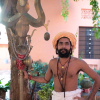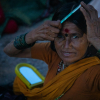Prem Chowdhry is the author of The Veiled Women: Shifting Gender Equations in Rural Haryana (1994). This book, now with a new preface charting recent events, examines the position of women in rural Haryana in north India.
Q: Could you tell us briefly about your research so far, particularly on your research on Haryana?
Prem Chowdhry: I have been researching on Haryana for more than three decades.
Q: Given the background of your research on Haryana, have you ever specifically explored the issue of marriage and the rituals attached to it? If so, then have you kept in mind any specific approach?
P.C.: Yes, I have explored marriage issues in various aspects closely. There is no specific approach that one follows except the one which is thrown from the field work. This also get verified or contested from different quarters to ascertain the different points of view emanating from different age groups, castes, community, gender in different regions of exploration.
Q: From your experience as a researcher, and also a person who is born in the community, what value do you think is attached to the marriage rituals in an increasingly modernised world?
P.C.: Rituals may remain in one form or the other but their content, articulation and understanding also changes, however subtly. This has indeed created some apprehension among the male populace of the region who have tried through their Panchayats to contain the subversive songs, for example. The situation is indeed complex. It is after all a transitional phase for them
Q: Is there a difference in the degree of importance given to the rituals by people residing in villages, with most of their social networks based in villages, than the people who have spread out not only in cities all over India, but also across the world? Is this neat division of rural-urban possible today?
P.C.: I am afraid the situation is highly complex. The urban-rural divide is an overlapping one with determination in many quarters to maintain the old patterns. What you are asking me to comment is on 'people who have spread out not only in cities all over India, but also across the world'. Is it possible?
Q: Just as important, if not more, as the formulaic rituals to any Haryanvi marriage ceremony are the rituals of singing and celebration. Women are seen at the forefront of such celebratory performances. What is your impression of the wedding songs, or other non wedding songs, that are sung by women in the company of other women?
P.C.: 'Subversive in one word. But again it has to be qualified. See my answer to Q no 3.
Q: In the seminal text written by you, The Veiled Women: Shifting Gender Equations in Rural Haryana (1994), you have mentioned (as well as translated to English) many Haryanvi folk songs and common saying as secondary sources to substantiate your study. Have you ever considered the task of translating folk songs from Haryana as a literary exercise? Do you see merit in it – culturally, historically?
P.C.: No, I have not considered translating these songs as a ‘literary exercise’. As you said, it would be a literary exercise. I am interested in understanding them socially.
Q: Most marriage folk songs are event-based. This means that they exist because the event of a marriage ritual exists. Apart from a ritualistic existence, what is your understanding of the future of these songs? Do you see them thriving outside the framework of marriage rituals that engendered them? If so, then what are the possible ways do make that happen.
P.C.: As you stated these songs will exist so long as 'marriage ritual exists'. I hope you know that they are getting adopted in a most corrupted form in the Bombay films. But that would need research. Perhaps future researchers may take that up this aspect to study.
Q: Apart from being a historian, you have also devoted a fair bit of your time to painting. Do tell us a bit about your painting process; what inspires you to paint? Has Haryana, or any of your other research interests as a historian, shaped what you paint and the way you paint it?
P.C.: I was interested in taking Painting as a subject to pursue after my school but wasn’t allowed as those days, when one was growing up, painting was not considered an entirely ‘respectable’ subject to pursue. It had to be academics. But I retained my interest in painting and continued as my very serious interest. However, what you paint is entirely subconscious. You don’t plan it at all. But looking back at the majority of them I notice a domination of the female perhaps linked to my interest in gender studies.
Q: Lastly, what do you think are the ethical burdens and responsibilities of archiving as an individual for a community that is so diverse in their opinions and beliefs? Does research, including the one that I undertook, isolate the people we are writing about as often they are not active participants in the networks of dissemination of such discourses? Are there any ways to include the people who make many such research efforts possible?
P.C.: This is a question which must be answered by each researcher individually. There are no discernible common fault- lines. As an academic you can only honestly write about what you feel strongly about. If you are going to think about the impact that such a writing may have, then where is your honesty and commitment to yourself and to your profession.











